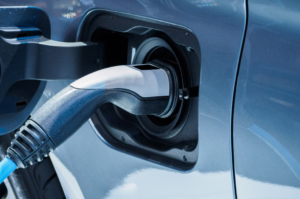03.02.2021
Mass Adoption of EVs: A Massive Undertaking
 The year 2021 may well go down in history as the year in which electric vehicles (EVs) transitioned from a small niche of the global automotive and transportation industry to the widely accepted, mainstream path forward for powering mobile machines of all sizes. There is no shortage of hype around new electric passenger vehicle models, and public announcements by major OEMs to transition their vehicle offerings to all-electric over the next 10-15 years seem to be happening on a weekly basis. Medium- and heavy-duty vehicles are beginning to be electrified, too; Faith Technologies is working with PACCAR and its customers to support the rollout of all-electric Peterbilt and Kenworth trucks. Even vocational vehicles used in industries like construction are starting to be electrified.
The year 2021 may well go down in history as the year in which electric vehicles (EVs) transitioned from a small niche of the global automotive and transportation industry to the widely accepted, mainstream path forward for powering mobile machines of all sizes. There is no shortage of hype around new electric passenger vehicle models, and public announcements by major OEMs to transition their vehicle offerings to all-electric over the next 10-15 years seem to be happening on a weekly basis. Medium- and heavy-duty vehicles are beginning to be electrified, too; Faith Technologies is working with PACCAR and its customers to support the rollout of all-electric Peterbilt and Kenworth trucks. Even vocational vehicles used in industries like construction are starting to be electrified.
What are the implications of an EV future from an energy standpoint? Experts agree that the U.S. power grid is not currently equipped to support mass adoption of EVs. Improving electrical infrastructure to support privately-owned passenger EVs is perhaps the easiest problem to solve for a few reasons:
- Batteries in light duty EVs are relatively small
- Private passenger vehicle use is low mileage
- With the exception of recharging during longer road trips, available time to recharge is high
These factors make the charging requirements for passenger vehicles, both in total electricity required and the rate of consumption (demand) manageable at scale. Low infrastructure requirements for slower speed private and home charging along with continued investments in public charging stations will provide a fairly seamless transition to EVs for most consumers.
But what about commercial vehicles? Unlike personal vehicles, commercial vehicles are characterized by frequent and multi-shift use, heavy loads and short dwell times between scheduled routes, which can all contribute significantly to the electric infrastructure requirements to recharge electrified fleets.
For commercial fleets evaluating the shift to EVs, here are some critical questions to consider:
- What applications or duty cycles can be made more efficient and/or more cost-effective by using an EV instead of a combustion engine?
- What vehicles available now and in the future will meet duty cycle requirements of current and future routes?
- What is the battery size of the vehicle(s) being considered, and what range does that battery size provide the vehicle with?
- Based on battery size and vehicle range, how quickly and how frequently will vehicles need to be recharged to meet operational requirements?
- After adding up the total power consumption and demand requirements for recharging the fleet, how will the power be provided to the facility and distributed to charging locations?
- How will the cost, availability and reliability of electricity be managed and optimized?
The electrification of commercial fleets is no small undertaking. Indeed, mass adoption of EVs for commercial use will be one of the preeminent global energy challenges of the next decade. While increased government action, investment and advocacy by various industry groups will help, commercial fleets of all sizes need to take more active ownership over the procurement, production and management of energy in various forms if they are to remain competitive in the electric age of transportation.
If you enjoyed this blog article, please subscribe to stay up to date on the latest industry news from our experts at Faith Technologies.




